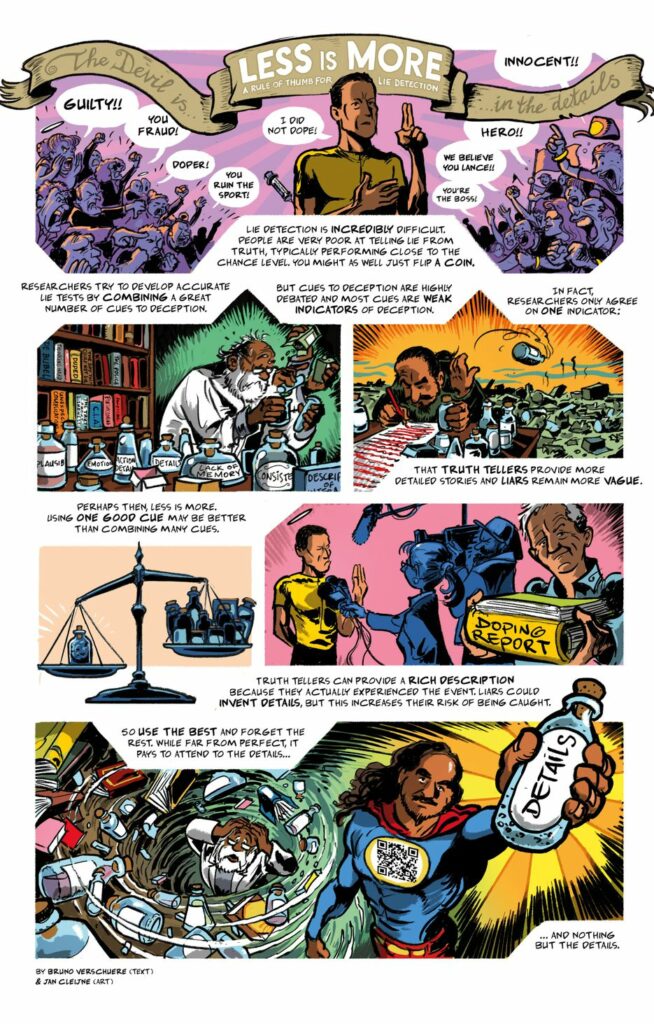Think You Know How to Spot a Liar? Think Again
According to researchers from Leugenlab (LieLab) at the University of Amsterdam, in collaboration with researchers from Maastricht University and Tilburg University, spotting a lie has become simpler.
The traditional focus on body language and message credibility has been replaced by a new approach, which involves analyzing the detail and richness of the story.
In the aftermath of 9/11, security personnel were trained to identify as many as 92 indicators that someone might be lying.
Associate Professor of Forensic Psychology, Bruno Verschuere, has labeled the idea of recognizing 92 signals to detect a lie as nonsensical. He argues that it is impossible for people to assess all those signals in a short time, let alone combine multiple signals to make an accurate and truthful judgment.
“People can’t assess all those signals in a short time, let alone integrate multiple signals into an accurate and truthful judgment.
“We are used to believing people who look innocent. After all, it pays to believe by default that people are good. And liars have happily exploited this fact – just remember Lance Armstrong, he had many people’s sympathy for a long time.”
For quite some time, researchers studying deception have suggested that relying on a person’s body language to detect lies is not the most effective method. Instead, they advocate for focusing on what the person actually says.
Current verbal lie detection tests attempt to combine various signals such as consistency, directness, and plausibility. However, these signals do not always provide a clear indication in the same direction.
The Lie Lab has introduced a fresh approach to identify lies, where individuals make their judgments based on only one signal. This method involves a straightforward rule of thumb that centers on the richness of the liar’s story. Although it takes some time to adapt to, it is an effective technique.
Bruno Verschuere elaborates, “it feels very counterintuitive to just listen to what people are saying and not to pay attention to all kinds of other signals, such as how convincingly or emotionally someone conveys their story.”
“But people who tell the truth can give a rich description because they actually experienced the event, whereas although liars can come up with details, this increases their risk of being caught.”
Bruno Verschuere, in collaboration with cartoonist Jan Cleijne, developed a science comic to demonstrate the new technique of lie detection.

The researchers carried out a series of laboratory experiments to determine whether they could identify lies with absolute certainty. They divided a group of students into two groups: those who were guilty and those who were innocent. The guilty group was instructed to steal an exam from a locker, while the innocent group was asked to spend thirty minutes on the campus, which involved visiting the library, having coffee, and calling a friend. Afterwards, both groups were required to claim that they had spent half an hour on campus.
In nine different studies, 1,445 participants were presented with honest and deceitful handwritten statements, video transcripts, video interviews, or live interviews, and asked to assess their accuracy.
In the normal condition, participants were allowed to use any available signal – from looking someone in the eyes to looking for tense behavior or a very emotive tale – to determine if someone was lying.
In this situation, it was hard for them to tell the difference between the truth and a lie, and they barely did better than chance.
When they were told to only look at how detailed the story was (in terms of place, person, time, and location), they were always able to tell the difference between the truth and a lie.
Source: 10.1038/s41562-023-01556-2
Image Credit: Getty
